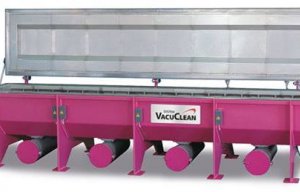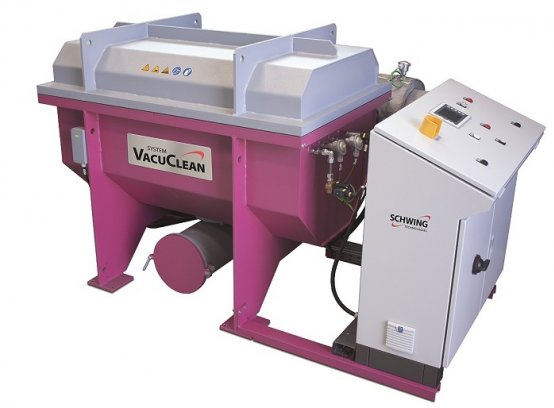
Thermal cleaning critical in optimising nonwovens production
Schwing Technologies will present the updated version at the ITMA Asia trade show, in Shanghai, this October.

20th July 2018
Innovation in Textiles
|
Neukirchen-Vluyn
The development team at Schwing Technologies, a German thermal cleaning company, has been working on the modernisation and digitisation of the company’s Vacuclean system to meet Industry 4.0 requirements for about a year. The company will present the updated version at the ITMA Asia trade show, in Shanghai, this October.
The developers have added several new components to the thermal vacuum pyrolysis system for cleaning polymer-contaminated tools and machine parts, such as filter bundles, leaf discs, spin packs, spinnerets or melt-blown and spunbond dies, with lengths of up to six meters. The new components include a new touch panel with network connection as well as a revised fault monitoring concept, internal data connection for data mining, digital system documentation in the Schwing cloud, as well as fully electronic flow measurement for catalyst supply air and a process signal light.
Schwing will be equipping all new systems according to this design principle from now on. The company modernises older systems for customers at company headquarters in Neukirchen-Vluyn on request.
Customers now benefit from the larger and more intuitive C70 touch panels with network connectivity. These control elements are also represented one-to-one on PC interfaces, allowing operators to conveniently control them from their end devices without restriction. An OPC UA interface ensures the reliable display and archiving of the entire machine data as well as integration into integrated fault monitoring concepts. They support the system's predictive maintenance.
“We put a lot of emphasis on predictive maintenance,” commented Virgilio Perez Guembe, Head of Sales at Schwing Technologies, pointing out that all system-relevant information is registered and recorded in the process. “The self-developed Windows app Schwing DataAnalyser evaluates this data and checks the system. Last but not least, the company provides its customers with the complete electronically generated system documentation in the Schwing cloud, ensuring easy and shared data usage.”
Another new design detail is the fully electronic flow metre for catalyst supply air. It records data and automatically transfers the values to the control unit, where the flow rates will be checked, and possible fault messages will be generated. A multi-coloured signal light also informs operators about operating statuses as well as providing a good overview of the system status from a distance of several meters. Schwing offers its customers the option of an automated system opening on the device.
Depending on system size, cleaning material and type of polymer, the Vacuclean system is said to remove organic build-up within 8-30 hours without any mechanical or thermal impact on tools. The system cleans fully automatically in an electrically heated vacuum cleaning chamber whose temperature is measured directly on the items being cleaned.
“The process initially heats up slowly and gently, with the aim of melting off and draining most of the adhering polymers. The remaining polymer decomposes at around 450 degrees C. Oxidation subsequently removes any residual carbon. Sophisticated sensor technology controls this fully automated cleaning process. Possible inorganic residues are easily removed by a brief secondary treatment,” the company concludes.

Business intelligence for the fibre, textiles and apparel industries: technologies, innovations, markets, investments, trade policy, sourcing, strategy...
Find out more